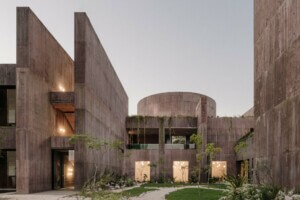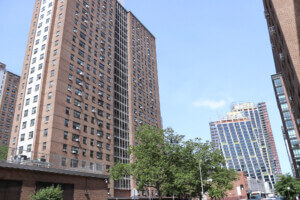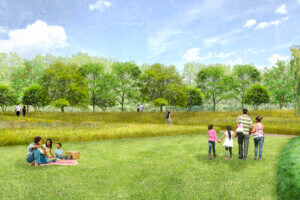Since 2016, Exhibit Columbus has activated the small eponymous Indiana city, home to about 45,000 people. Since the mid-20th century, it has been regarded as a hotbed of architectural innovation, from iconic and formally exciting structures to experimental ways of living. The exhibition, now in its fourth iteration, offers a platform for architecture’s rising stars to display work alongside established legends.
The word on the tip of everyone’s tongue this year at Exhibit Columbus was “community.” The 2023 exposition is called Public by Design which focuses on centering the perspectives of local Columbus residents to inform 13 installations spread throughout the city. According to Exhibit Columbus executive director Richard McCoy, designers were tasked with making “meaningful connections in public space” alongside local community leaders. To that end, each of the four recipients of the J. Irwin and Xenia S. Miller Prize paired up with various city departments for their projects.
Harlem-based Studio Zewde collaborated with Columbus’s department of parks and recreation for their piece, Echoes of the Hill, located in Mill Race Park, an early Michael Van Valkenburgh project. The Mexico City firm Estudio Tatiana Bilbao’s installation, Designed by the public, posited new social potentials for local libraries in dialogue with staffers from Cleo Rogers Memorial Library, designed by I. M. Pei. New York’s PAU (Practice for Architecture and Urbanism) built InterOculus, a steel rotunda designed for dancing located at a prominent Columbus intersection, in collaboration with the department of public works. PORT, an office with locations in Chicago and Philadelphia, designed The Plot Project together with members of the Mill Race Center, a community center for active adults on the edge of Mill Race Park.
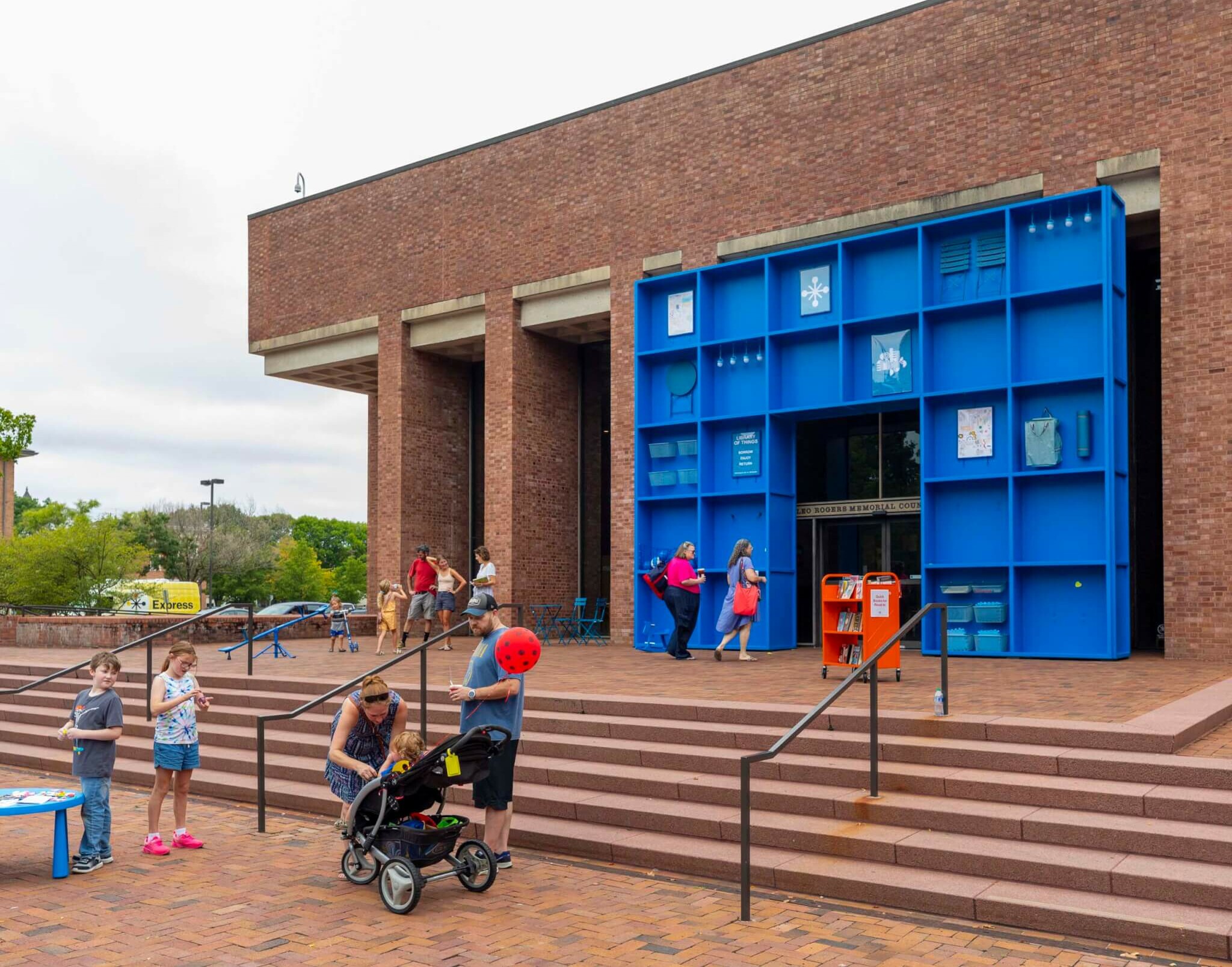
“We were part of Exhibit Columbus from the very beginning,” said Beth Stroh, who owns Viewpoint Books, an independent bookstore that opened in 1973 on Washington Street, Columbus’s main thoroughfare. “Downtown businesses like mine were asked about what we wanted to see. The way Exhibit Columbus leadership engaged with us made us feel like valued partners in this process. It just makes our community feel alive, activated, and welcoming.” Stroh worked with local high schoolers on their pavilion, Machi, which created a “new living room for all of us to be in community” in downtown Columbus. She told AN, “We can’t wait to see what kind of programming happens. We’re already planning storytimes there.”

Communications design by Chris Grimley was beautiful and clear, and brought home the public design motif. Grimley told AN that Exhibit Columbus’s graphic identity this year built off the original design by Rick Valicenti, and that the 25 brightly colored signs planted around town orienting pedestrians were an “homage to the playful patterns and shapes of Ray Eames and Alexander Girard.”
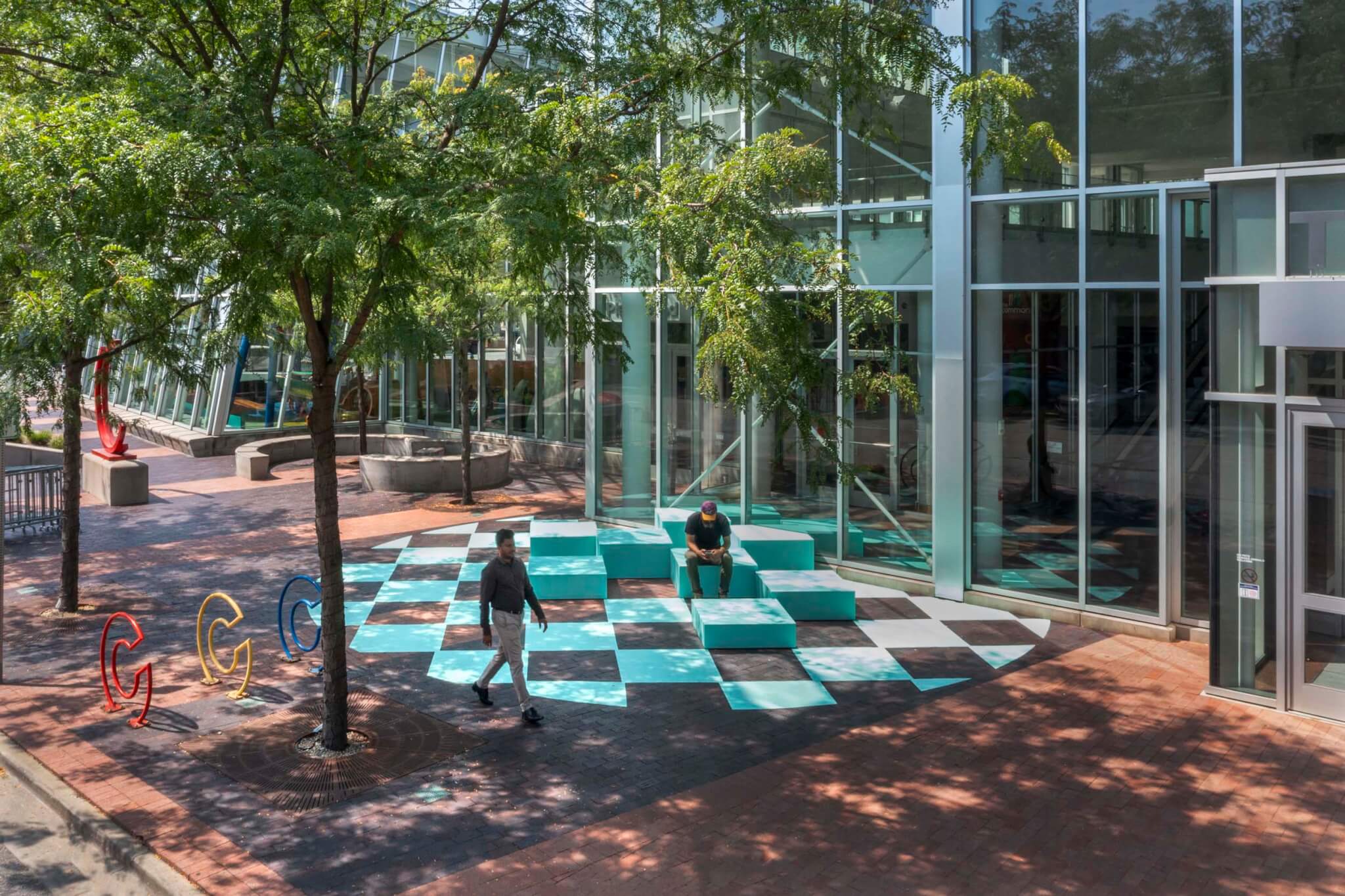
Alongside the four Miller Prize winners were seven University Design Research Fellows who also displayed works. These included Joseph Altshuler and Zack Morrison (Could Be Architecture/ University of Illinois at Urbana-Champaign); Esteban Garcia Bravo and Maria Clara Morales (Purdue University); Jessica Colangelo and Charles Sharpless (Somewhere Studio/ University of Arkansas); Deborah Garcia (MIT Belluschi Fellow); Molly Hunker and Greg Corso (SPORTS/Syracuse University); Katie MacDonald and Kyle Schumann (After Architecture/UVA); Ohio State’s Halina Steiner, Tameka Baba, and Forbes Lipshetz and Iowa State’s Shelby Doyle.
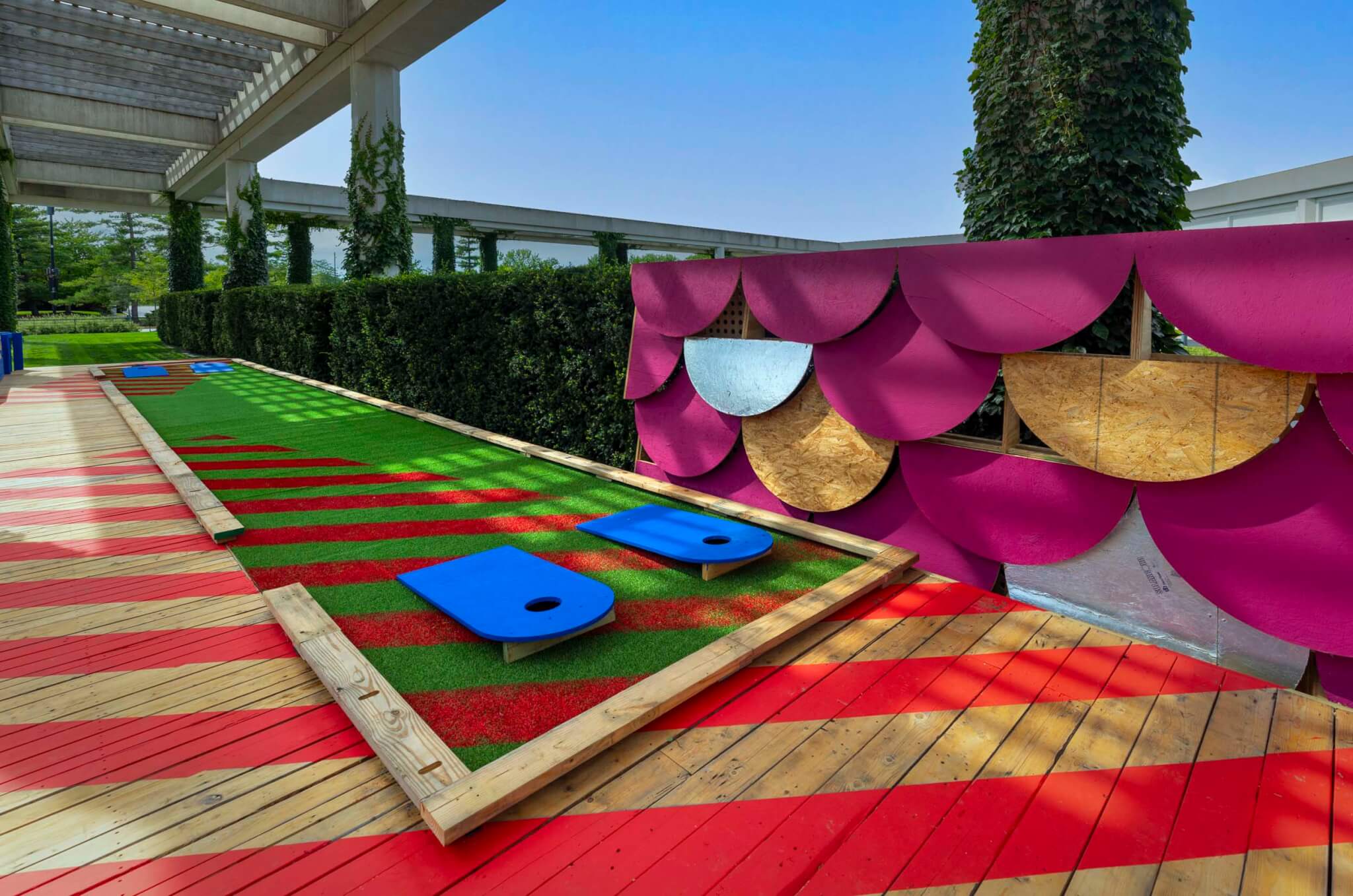
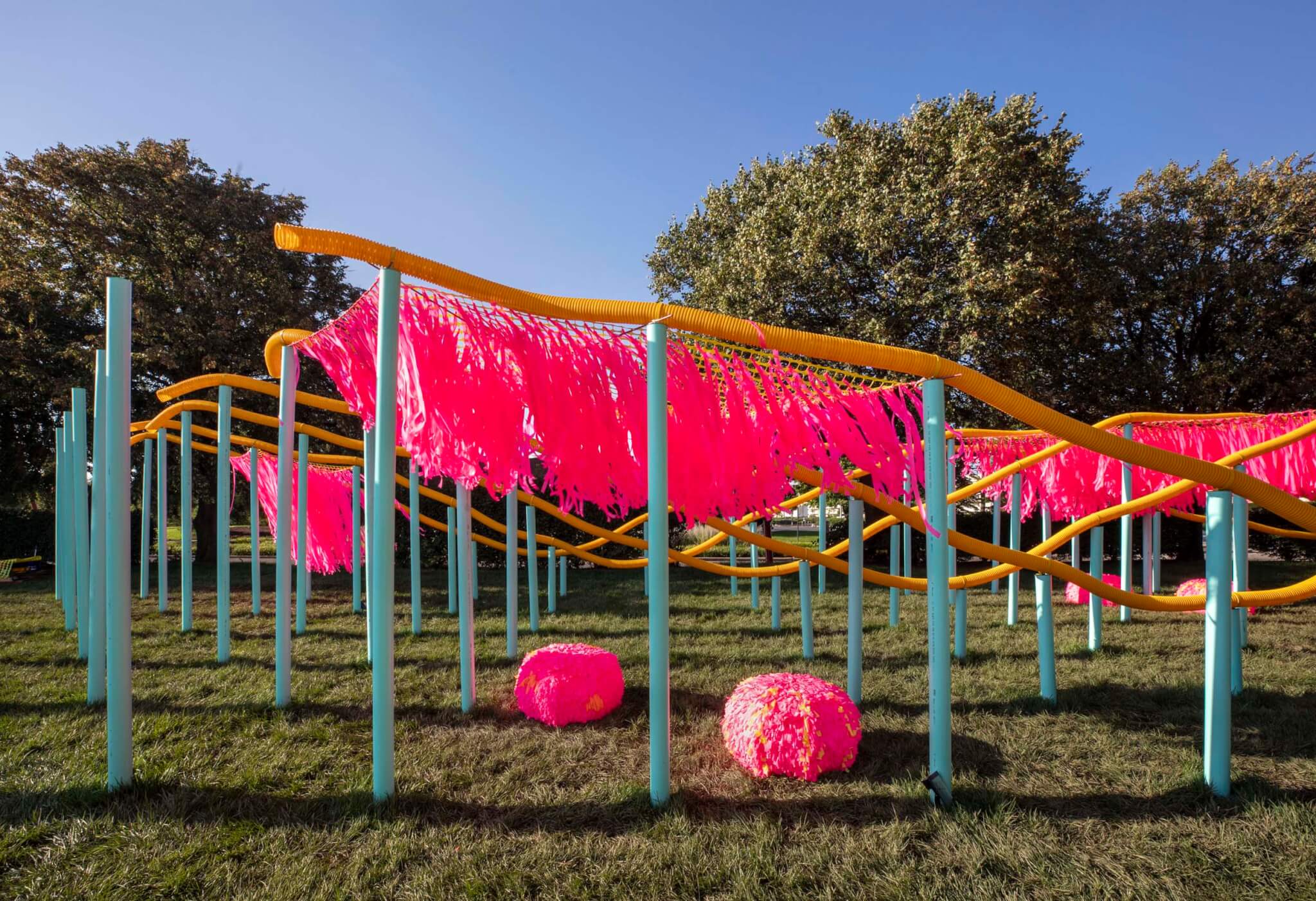
Located in a sunken brick terrace outside I. M. Pei’s Cleo Rogers Memorial Library, Responder by Deborah Garcia was a family affair. In collaboration with Propeller, a local production outfit, and MIT students, the piece was assembled on site by a herself, a team of local volunteers, and her two sisters, Ana and Sara. “My sisters have helped with all of my exhibitions,” Garcia told AN.
On display until November 26, Responder is a throne that doubles as a boom box sheathed in gorgeous charred wood panels. A nighttime sound performance on August 26 at Garcia’s installation gave Columbus the experimental feeling of a dissident noise show. Over the course of several months, Garcia recorded ambient noises from the Pei-designed library’s easily overlooked elements—its elevators, mechanical equipment—to compose a symphony, or “sonic register” with the building that John Cage would have appreciated. On opening night, viewers laid down on the subterranean plaza at Cleo Rogers Memorial Library after a long day of walking to take in the ambient music and observe the brutalist building in a new light.
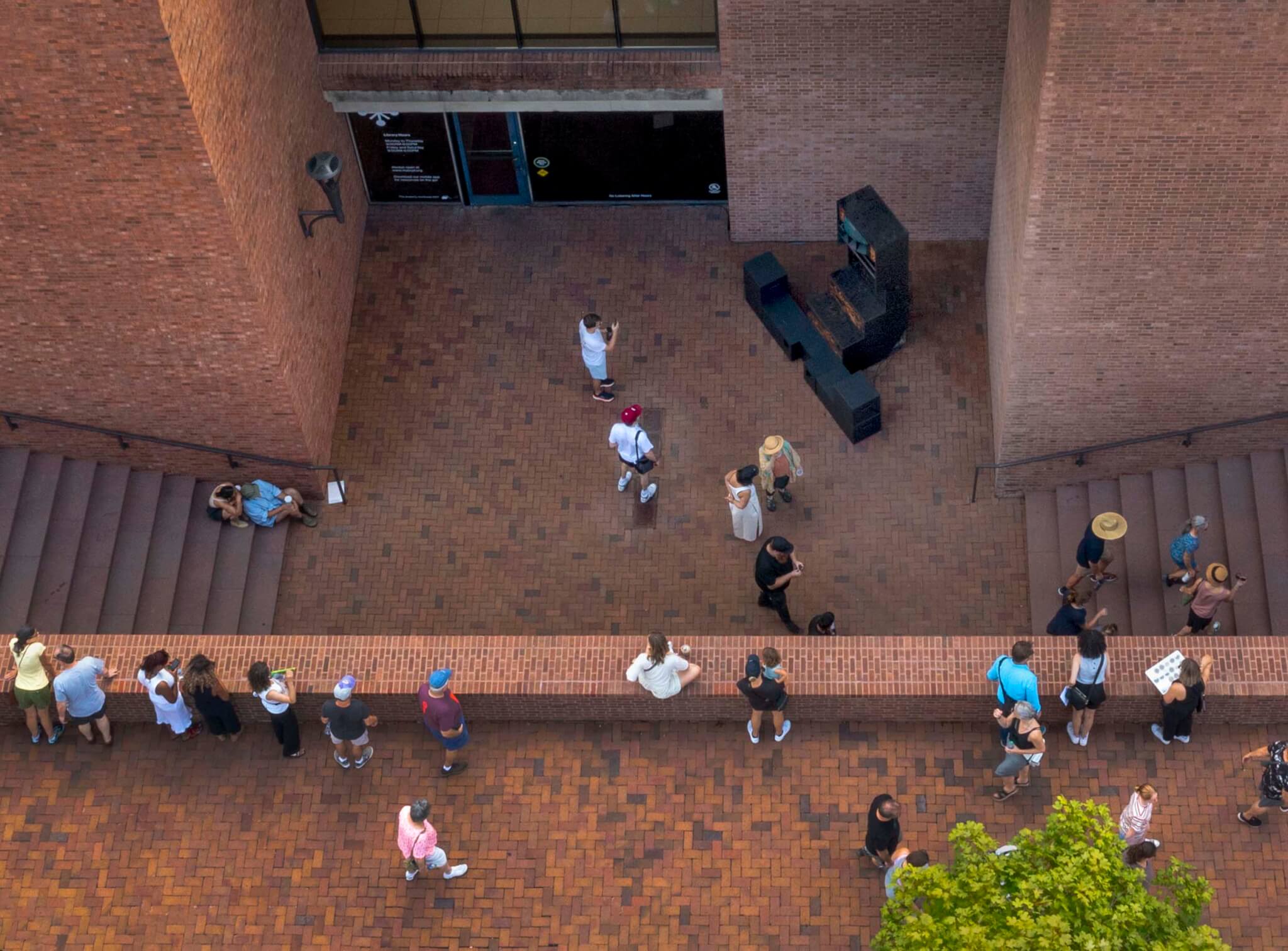
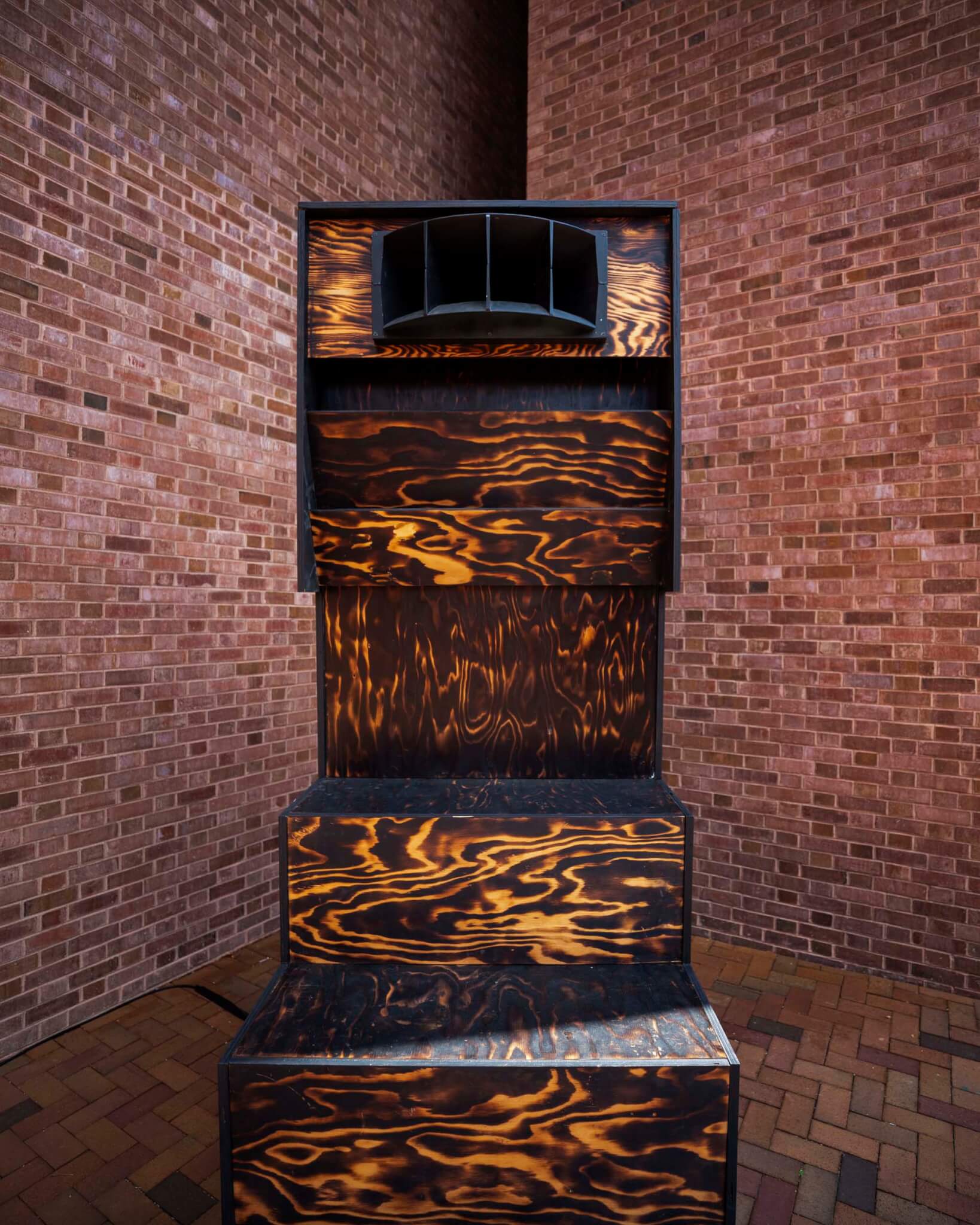
A second happening came later that evening at Prisma by Esteban Garcia Bravo and Maria Clara Morales, an illuminated installation across the street from Kevin Roche’s Cummins HQ building. Prisma featured glowing tubes that lit up the night sky, augmented by an experimental DJ set by Liv Mershon, a Chicago-based artist originally from Columbus. A pickup truck parked in the middle of the road made it safe for viewers to sit on the asphalt and consume the sights and sounds, giving the high-art packed evening Dazed and Confused vibes.
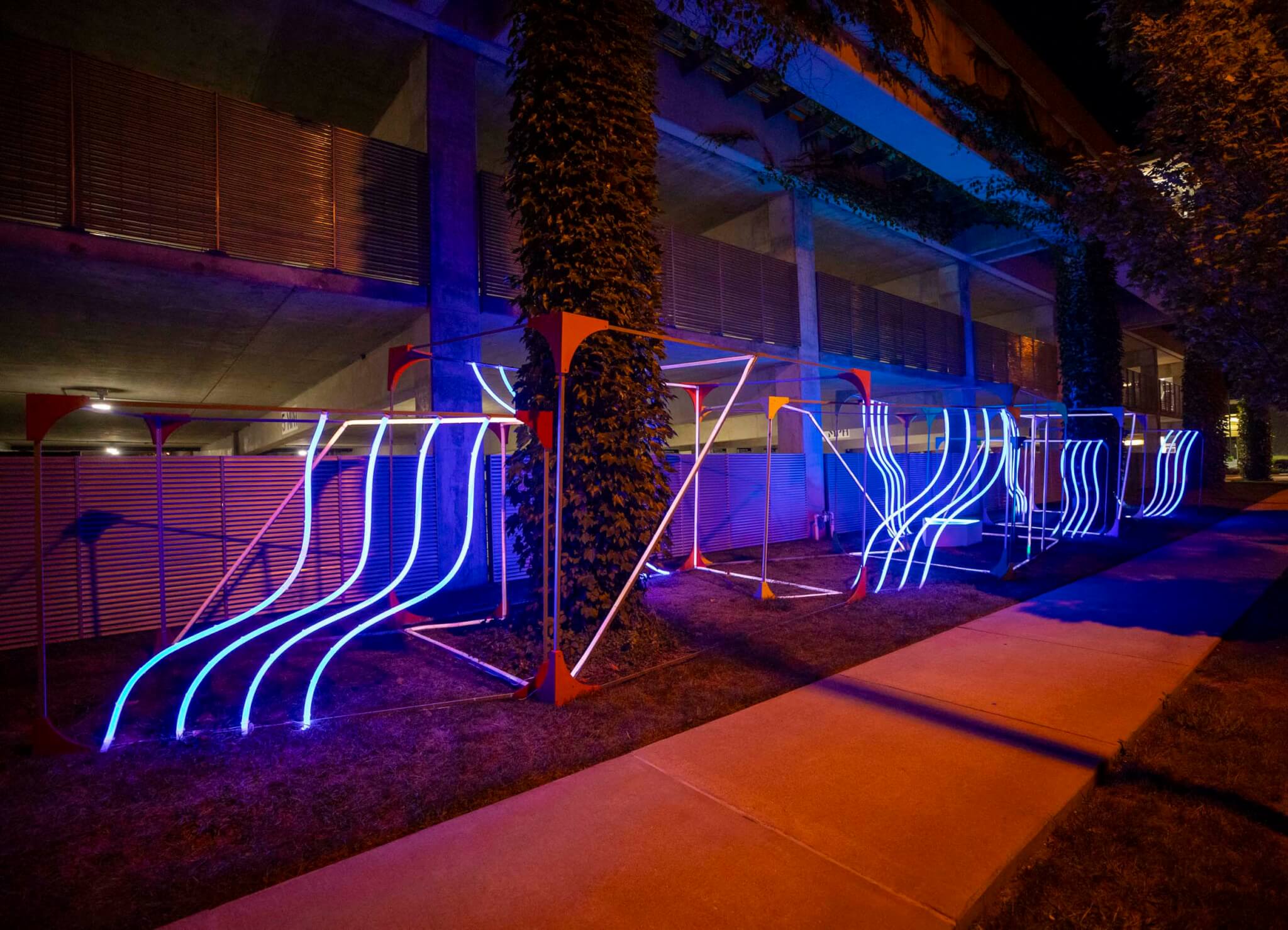
“It was wild playing in my hometown, seeing it from a totally new perspective, and playing my totally bizarre music for an entire hour,” Mershon told AN. “What was so joyful was, as I was playing, people came inside the installation by Esteban and Maria and danced inside of it while I was performing. It became almost a collaborative experience,” Mershon said. “It felt weird because in the 90s and early aughts, I felt like I needed to escape my hometown to explore the weirdness that’s inside of me. But it was really cool to discover that that weirdness is supported in the town where I grew up.”
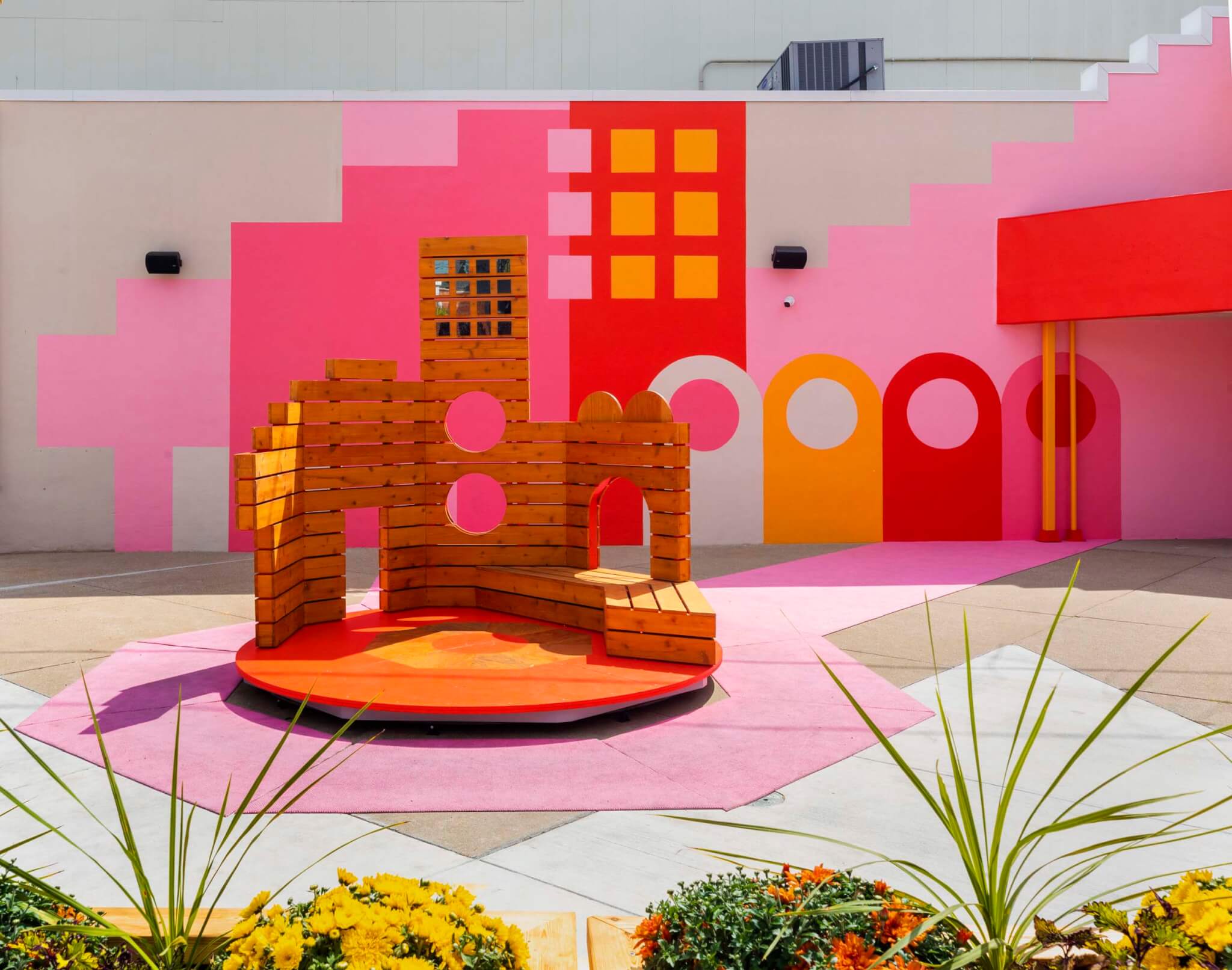
Could Be Architecture’s installation, A Carousel for Columbus, was also musically inclined. A local high school garage band shredded on top of the spinning carousel decorated with a deliciously polychromatic mural by Altshuler and Morrison. A self-described “locomotive love letter,” A Carousel for Columbus builds on the duo’s track record of experimenting with bold patterns and building artful public spaces. “Taken together, the carousel, supergraphics, and performances offer a locomotive landscape that celebrates the power of shape, color, character, and sound to generate a public platform by design,” the architects said in their project statement.
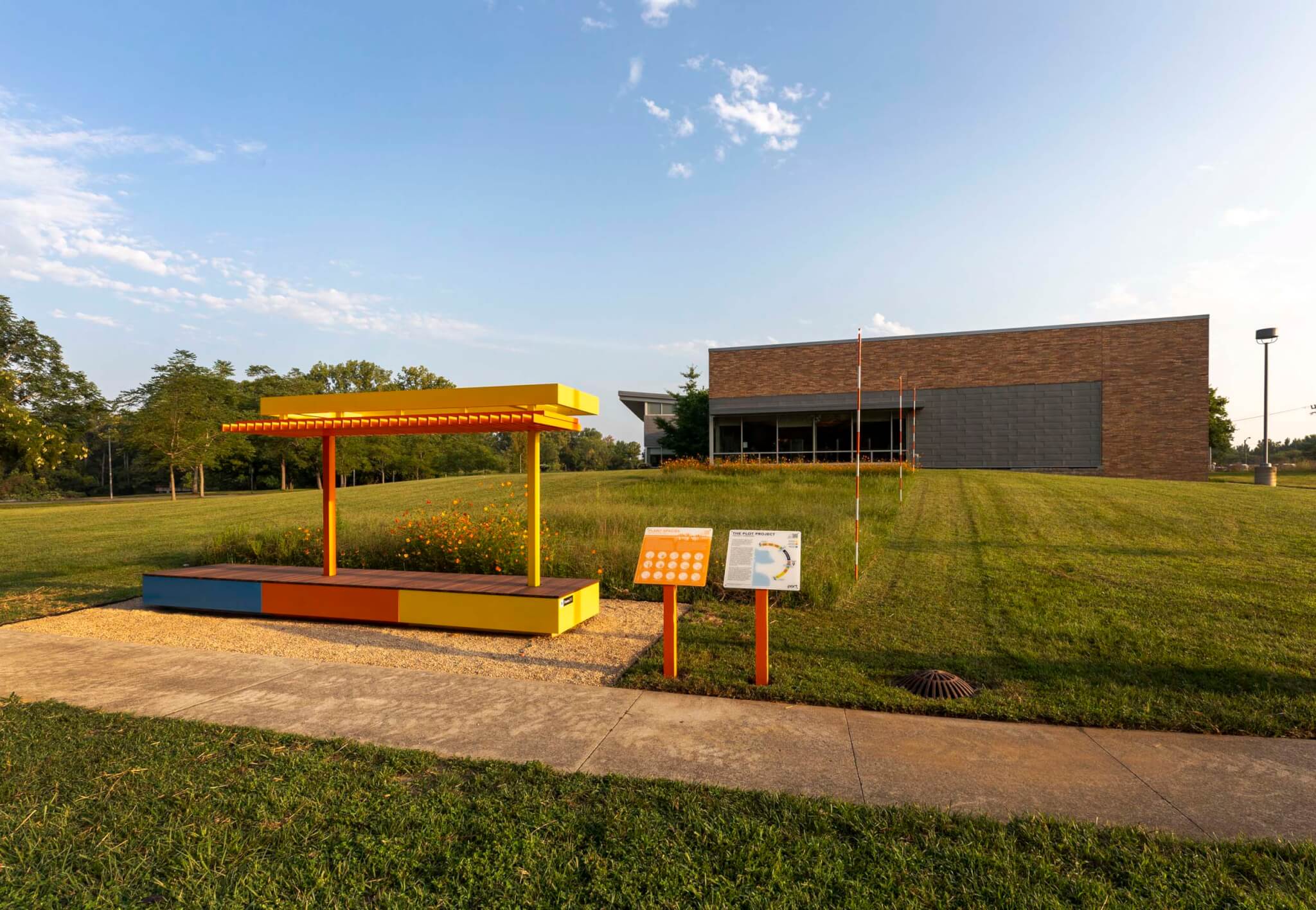
And then for some, the 2023 Exhibit Columbus meant coming full circle. “Twenty-six years ago I made a pilgrimage to the design mecca of Columbus, Indiana after my then–architecture professor, Stanley Saitowitz, had completed beloved follies in Mill Race Park,” said PAU founder Vishaan Chakrabarti.
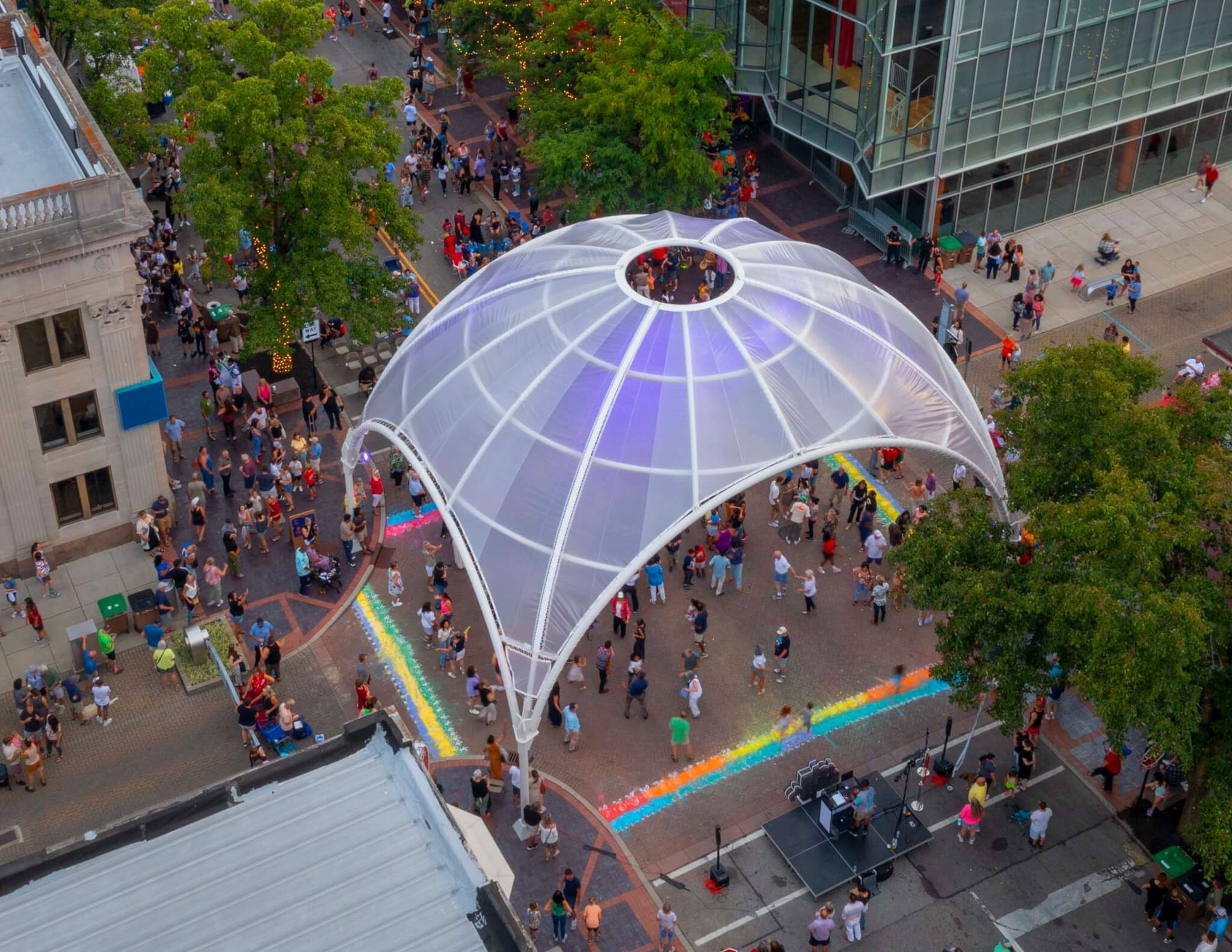
“Ever since it’s been a lifelong dream to build there, so the fact that PAU’s first built design, InterOculus, now stands proudly at the heart of downtown Columbus as a canvas for community convening is both humbling and gratifying, particularly given the extraordinary multicultural dance that launched it,” he told AN. “At a cultural moment when society feels like it is spinning apart, an architecture of urbanity can pull us together to address the big issues of our day, from climate change to inequity to the social isolation driven by technology.”
AN is a media partner for Exhibit Columbus.







